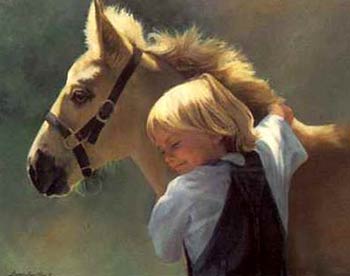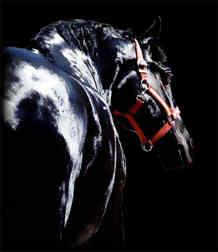
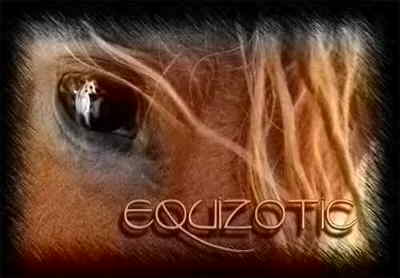
http://www.savethehorses.com/
http://www.horseandfarmmagazine.com/cruelty.html
http://www.equineprotectionnetwork.com/cruelty/cindex.htm
http://www.equineadvocates.com/premarin.html
http://www.horseplaza.com/cfusion/template/cruelty.cfm
http://www.savewildhorses.org/
http://www.awionline.org/pubs/Quarterly/winter02/blindeye.htm
http://homepage.fcgnetworks.net/buddy/
http://www.horsesanctuary.com/our_mission.htm
http://www.geocities.com/Heartland/6768/
http://p3_acres.tripod.com/
http://members.aol.com/Ladyhawk55/page/kare.htm
http://www.tznet.com/yukon/
http://mtpleasantfarm.com/rescue.htm
http://www.geocities.com/Heartland/Garden/7321/
http://www.tierrescue.org/
http://www.geocities.com/Petsburgh/Stable/4546/index.html
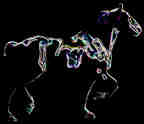
This is a copy of the petition sent by thousands of people who support legislation against horse slaughter and cruelty. At the bottom is the hyperlink where you can add your name.
To: The President and Members of Congress of the United States
We the undersigned citizens of the United States hereby petition the President & Congress of the United States of America to pass and make into law the American Horse Slaughter Prevention Act (H.R. 3781)
The U.S. Department of Agriculture statistics show that 55,776 horses were slaughtered last year at three American-based, Belgian-owned slaughterhouses for human consumption abroad. Tens of thousands more were shipped live to Canada for slaughter there.
Most horses arrive at the slaughterhouse via livestock auctions where, often unknown to the seller, they are bought by middlemen working for the slaughter plants. These so-called "killer buyers" travel from one auction to the next collecting young, old, sick and healthy animals until their trucks are full. Some are shipped for more than 24 hours at a time without food, water or rest.
Callous treatment at the slaughterhouse often results in prolonged suffering. Improper use of stunning equipment, designed to render the animal unconscious with a swift shot to the head, means that horses sometimes endure repeated blows, and remain conscious during their own slaughter, including throat slitting.
This bill would prohibit the trade and transport of live horses and horseflesh intended for human consumption. Containing both domestic and international trade provisions, the American Horse Slaughter Prevention Act will end this atrocious trade for good, not send it over the border or further abroad.
Americans do not eat horses. We do not raise them for food. We ask that you pass and make into law H.R. 3781 and end this barbaric practice for good.
Sincerely,
http://www.petitiononline.com/AHSPA3/petition.html



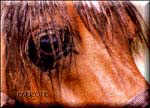
About Us: answering some of your questions about the regulars at HiHopes.
Horses: just like all the celebrity sites, we offer Bios & Picture gallery of all our "famous" residents (Ok, maybe their only famous to us, we love them just the same).
Adoptions: free database of adoption info. The list includes both available horses & people who want to adopt a rescue horse. Add your horse or yourself to the growing list. Rescues are encouraged to search the database for suitable homes for their animals.
Premarin®: the real story behind the menopause drug made of horse urine and how horses and their foals are affected by the production of premarin.
Links: tons of great horse lover links
Issues: rescuing horses and other animals is not just fun & games (our volunteers can attest to that). In addition to our daily chores we review proposed legislation and relate how it can affect your animals.
Donations: analysis of where your donations go, calculating expenses for horses that come to HiHopes & give you address information for your donations.
 HOME HOME
|
|
Humane Education
We need to remind environmental educators, who are often predisposed to the humane ethic, that without humane education, environmental education reaches the mountains, but not the trapped coyote; the oceans, but not the aquarium-bound whale; the Arctic, but not the clubbed seal; the cities, but not the cinched rodeo horse; the farm-lands, but not the crated veal calf; the endangered species, but not the abused animals.
--Patty Finch
Former Director of the National Association of Humane and Environmental Education
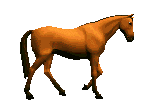 www.hoofpac.com www.hoofpac.com
Goals of Humane Education
One goal of humane education is to eliminate the unnecessary suffering that animals endure at the hands of humans by assisting children in developing compassion and respect for all living things. For hundreds of years, society has noted that children should not inflict unnecessary suffering on animals. In the early 18th century, the primary reason for teaching kindness and respect to children was anthropocentric in nature: If humans are kind to animals, they may be kind, or at least less violent, to other humans. (Locke, 1998 p. 5). This rationale holds true today: Animal abuse is often a precursor for human violence, especially for child abuse (Felthous, 1998, pp. 159-167; Loar & White, 1998, p.314-317; Arkow, 1998, pp. 409-412). So humane education may help to stop human violence and abuse before it starts. But another rationale exists today: The welfare of the animal is important not only because it benefits humans, but also because it benefits the animals themselves. Today, animals are generally accepted as sentient creatures and as such they have an interest in not suffering. (Singer, 1995)
A second goal of humane education is to teach children the interconnectedness of life and our planet by instilling life lessons through the acquisition of critical thinking skills and the experience of the human-animal bond. Children may then be able to make informed decisions and act upon their personal beliefs. For example, a grade two student may not kill a worm simply because they may think that killing a worm is bad, but they are not sure why. In grade four, that same student may now come to understand that the worm has value can help gardens grow. By grade seven the student understands the interconnectedness of the worm and the earth: how the worm helps the gardens grow, birds eat worms to feed their young and so on (Helston, 2002). While this is a simple example, it demonstrates that humane education is valuable in helping children understand the interconnectedness of life and our planet.
|
|
|
|
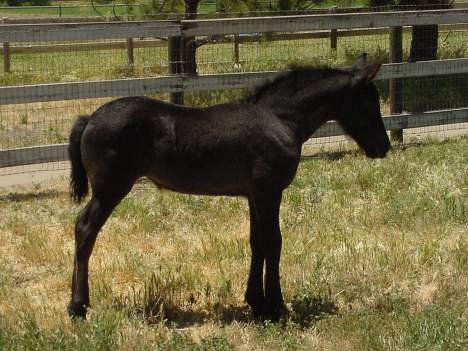 In the years I have been around horses, I have seen wretched neglect and abuse. Once I attempted to rescue a horse who had been left out in the pasture without water or food after having colicked. The horse was nearly dead when I found him. His mouth was swollen and bloody from beating his head against the ground to relieve the pain. His bones stuck out and he had not eaten a proper meal in ages. He could barely walk and held his head low to the ground. He was obviously wormy and dehydrated. In the years I have been around horses, I have seen wretched neglect and abuse. Once I attempted to rescue a horse who had been left out in the pasture without water or food after having colicked. The horse was nearly dead when I found him. His mouth was swollen and bloody from beating his head against the ground to relieve the pain. His bones stuck out and he had not eaten a proper meal in ages. He could barely walk and held his head low to the ground. He was obviously wormy and dehydrated.
When I went to get him, I broke out into tears as he attempted to walk on bad legs to the trailer. I had to push him part of the way. It took five people to get him into the trailer, because he was in so much pain. When we arrived at the vet, he was pumped with fluids, given limited amounts of food (in case he should colic again), and was offered water. The vet tried desperately to save him, fighting through the night, but he died the next morning. He was a Thoroughbred racehorse -- the tattoo was on his lip -- he had been sold as a polo pony, where he was treated like this. As I write this story, I get tearful. As much as I hate horse slaughter, I would rather a horse be slaughtered instead of going through what this horse went through. However, laws should be passed for a more humane end, and horse thieves who steal horses from people's properties should have more legal action taken against them.
- -Morgan

http://www.crazyhorse.org/

http://equineprotectionnetwork.com |
|
|
HON. CONSTANCE A. MORELLA
OF MARYLAND
IN THE HOUSE OF REPRESENTATIVES
Thursday, February 14, 2002
Mrs. MORELLA. Mr. Speaker, today I join my colleagues, Mr. GILMAN, Mr. CHRIS SMITH, Mr. JONES, Mr. PALLONE, and Mr. LANTOS to introduce the American Horse Slaughter Prevention Act. This bill will prevent the cruel and senseless slaughter of American horses simply to satisfy the culinary desires of consumers in Canada, Europe, Japan, and elsewhere. According to the U.S. Department of Agriculture, 55,776 horses were slaughtered in the United States last year for their meat, which was then sent overseas for human consumption. Thousands more were shipped live across the boarders to Canada and Mexico for slaughter there.
The American public is largely unaware that our horses are slaughtered for human consumption, and the three foreign-owned slaughterhouses operating on U.S. soil would like to keep it that way. As Canadian slaughterhouse operator Claude Bouvry said, ``People in the horse-meat industry don't like talking about slaughtering horses for food because of the horse's almost mythical place in Western culture.''
Horses have played an important role in American history, and continue to do so through their use in agriculture, transportation, law enforcement, military service and as companion animals. American culture is peppered with famous equines, including Paul Revere's Brown Beauty, General Robert E. Lee's Traveler, and General George Armstrong Custer's horse, Comanche--the sole surviving member of Custer's 7th Calvary at Little Big Horn. Other cultural icons of the equine persuasion include the Pony Express, the Lone Ranger's faithful mount Silver, Roy Rogers' Trigger, famed Triple Crown winners Citation and Secretariat, Flicka of My Friend Flicka and Mr. Ed, to name a few.
Pet horses, workhorses, thoroughbreds, Premarine© foals (who are a byproduct of the female hormone replacement drug industry), old and unwanted horses, horses purchased under false pretences and federally protected wild horses go to slaughter. Most arrive at the slaughterhouse via livestock auctions where, often unknown to the seller, they are bought by middlemen working for the slaughter plants.
These so-called middlemen better known as ``killer buyers'' travel from one auction to the next collecting young, old, sick and healthy animals until their trucks are full. Some are shipped for more than 24 hours at a time without food, water or rest. Increasingly, stolen horses are included on the killer-buyers' trucks. As the article Horse Theft: A Victim's Story so aptly puts it ``Rustling horses is quick, profitable and dirty work. Most horse thieves swiftly unload their stolen animals at auction, where most of the creatures end up at slaughter.''
While the transport of horses to slaughter is itself horrific, callous handling at the slaughterhouse often results in additional suffering. Improper use of stunning equipment, designed to render the animal unconscious, means that horses sometimes endure repeated blows to the head, and remain conscious through the last stages of slaughter, including throat slitting.
There are human health reasons to be concerned about horse slaughter, too. Because they are not raised for food or fiber, the flesh of many horses going to slaughter is likely to be contaminated with medications and other substances unfit for human consumption.
Americans do not eat horses. We do not raise them for food. The vast majority of Americans, when told that our horses are being slaughtered for dinner in Europe, are horrified. In fact, a recent survey indicated that the American public would overwhelmingly support a ban on the slaughter of horses for human consumption.
The American Horse Slaughter Prevention Act is a strong bill, which will end the slaughter of our horses for human consumption for good, rather than simply sending the practice over the border. This bill has the support of the American public, the animal protection community, horse owners and prominent members of the horse industry. Mr. Speaker, as we enter the Year of the Horse I urge my colleagues to join me in supporting this important and long-overdue legislation.
|
. |
|
SLAUGHTER AND TRANSPORT OF HORSES UNDENIABLY CRUEL
Callous treatment at the slaughterhouse often results in prolonged suffering. Panicked horses are often prodded and beaten off the truck and into the kill-chute. Improper use of stunning equipment, designed to render the animal unconscious with a swift shot to the head, means that horses sometimes endure repeated blows, and remain conscious during their own slaughter, including throat slitting.
Several states have passed laws either prohibiting the slaughter and/or consumption of horseflesh, or restricting the manner in which horses are transported to slaughter. In February, 2002, federal regulations concerning the commercial transport of horses to slaughter were implemented, but they offer little real protection for the horses. For instance, the regulations allow killer-buyers and slaughter houses to continue to ship horses on double-deck trucks until 2007. These trucks are designed for shorter-necked species such as cows and pigs, and horses are often forced to travel in a bent position for the entire journey. The U.S. Department of Agriculture even concluded that the trucks are inhumane, yet allowed for their continued use. Further, most Americans feel the slaughter of horses should be banned, not just regulated. |
|
